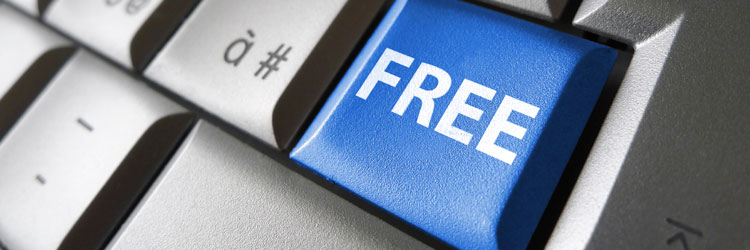Does free even have a cost?
According to the Merriam-Webster dictionary the definition of cost is “the price of something; the amount of money that is needed to pay for or buy something; something that is lost, damaged or given up in order to achieve or get something.”
Accountants have an obsession with costs. We classify them; we group them, we analyze them and have a multitude of names for them. However rarely do we consider free to have a cost, but if we look deep enough we will discover what’s hidden.
Before cable, Television viewing was free – all you needed was a TV and an antenna. That technology created a cultural change, whereas now generations of “couch potatoes” are collapsed on the couch being entertained by watching endless programs. Eventually we were conditioned to pay $100 to $200 a month for cable programming.
Currently Facebook is free – all your need is a computer and Internet access. This is another cultural change which provides a social platform to share with a vast multitude of friends. Based on the information we post on Facebook our demographics, our preferences and even our personal information can be gleamed. By participating we become part of an audience in which they can sell slice and dice information and sell to advertisers.
Free membership – Linked In is free for most of us. Those that don’t pay – provide an immense data base for sales people and recruiters. The paid memberships offer a higher level of search to help locate future employers and future customers.
Free labor – this is one of my favorites. When a friend asks for help moving, they can expect an invite to help you move. Based on the level of friendship, the price is minor.
Free samples are a direct marketing tactic that provides potential customers a taste of what they could have if they purchase. Grocery stores, warehouse stores, ice cream shops and bakeries are known for this marketing tactic.
Free food is a great way to capture people’s attention. Financial planners are well known to invite potential clients to a dinner in exchange for their time to listen to their pitch.
Free trial period – Have you ever signed up for something for 30 day trial period, then find your credit card getting dinged for the following months? You failed to notify them to cancel your trial period to prevent future charges.
What is the cost of free?
Where an actual product is involved there is the direct product cost to produce the items that are given away. In some cases this is a very cost effective way to gain new customers. For other items you open yourself up to a direct sales experience or a future commitment.
So what is the cost of free? It could be a future financial commitment, could be lack of privacy, could be a future change in habit, etc. In many cases the price paid for something that is disguised as free is not enough to bother us. However before you accept the next “Free” item, consider what they are asking for in return.

